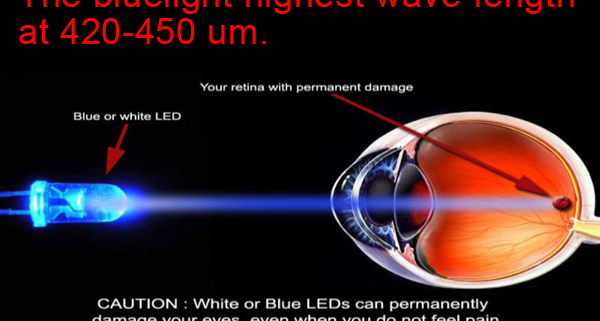Our eye hospital in Dwarka treats every kind of eye problem, and most of our patients complain about strain on their eyes and almost everyone blames it on blue light, so we got some of Delhi’s best eye doctors to dispel the myths and tell you the facts about blue light.
Sunlight is composed of red, orange, yellow, green, blue, indigo and violet light and when all of these are combined, it becomes the white light we see all around.
Where can we be exposed to blue light?
The sun is in fact the biggest source of blue light, along with which there are many other sources like
- Fluorescent light
- CFL (compact fluorescent light) bulbs
- LED light
- Flat screen LED televisions
- Computer monitors, smart phones, and tablet screens
The exposure to blue light we get from screens is dwarfed when compared to the amount of exposure from the sun. And yet, there is concern over the harmful effects of exposure to screens, this is more so because of how close we get to the screens and the amount of time spent in front, looking at them. According to more recent studies, it is children’s eyes which seem to absorb more blue light than adults from digital device screens.
What Are The Benefits of Blue Light?
Remember that blue light is a part of sunlight, and is necessary for good health as it will
- boost alertness, help memory and cognitive functioning even improve mood. .
- regulates the circadian rhythm – the body’s natural wake and sleep cycle. Exposure to blue light during daytime hours will help keep a healthy circadian rhythm. Although, excessive exposure to blue light late at night ( smart phones, tablets, and computers) can disturb this same wake and sleep cycle, leading to sleeping issues and daytime tiredness.
- Not getting enough exposure to sunlight in children can affect their growth and development of their eyes and vision. Earlier studies showed a deficiency in blue light exposure could contribute to a higher risk of developing myopia/nearsightedness.
Blue light and its effects on the eyes
Almost all visible blue light passes through the cornea and lens and reaches the retina. This light may affect vision and can prematurely age the eyes. Early research shows that too much exposure to blue light can cause :
Digital eye strain: Blue light from computer screens and digital devices can decrease contrast leading to digital eye strain. Fatigue, dry eyes, bad lighting, or how you sit in front of the computer can cause eyestrain. Symptoms of eyestrain include sore or irritated eyes and difficulty focusing.
Retina damage: continued exposure to blue light over time can damage retinal cells which may cause vision problems like age related macular degeneration.
The best way to avoid damage is by spending less time in front of screens but in case you have to, you should use computer glasses and anti-reflective lenses to better protect your eyes from prolonged exposure to blue light.
Call us and talk to the best eye doctors in Dwarka to know more ways to protect your family and your eyes from blue light.




